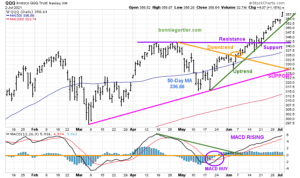BOOK: FORMULA- a Personalized 40-30-30 Weight-Loss Program
Chapter 4 Rating Carbohydrates
 Are you aware that simple carbohydrates, such as sugar, are the dieter’s downfall because they generate a surge in blood sugar and shortly thereafter a dramatic drop that causes you to be sleepy, cranky, and craving more sugar? We have been led to believe that complex carbohydrates such a bread and potatoes break down more slowly so the energy is released into the blood stream in a flatter curve. However, now you can measure this process by the glycemic index which is a numerical system that rates how fast carbohydrate food enters the blood stream. In the 1980’s the glycemic rating of carbohydrate food was first introduced and glucose was thought to raise blood sugar and was rated 100. In the1990’s additional foods were tested and many foods were found to be higher.
Are you aware that simple carbohydrates, such as sugar, are the dieter’s downfall because they generate a surge in blood sugar and shortly thereafter a dramatic drop that causes you to be sleepy, cranky, and craving more sugar? We have been led to believe that complex carbohydrates such a bread and potatoes break down more slowly so the energy is released into the blood stream in a flatter curve. However, now you can measure this process by the glycemic index which is a numerical system that rates how fast carbohydrate food enters the blood stream. In the 1980’s the glycemic rating of carbohydrate food was first introduced and glucose was thought to raise blood sugar and was rated 100. In the1990’s additional foods were tested and many foods were found to be higher.
Not all carbohydrates are rated equal. Foods range from high to a very low range, which means some carbohydrates are better for you so you should choose them when you can. The higher the glycemic index number, the faster it raises blood sugar. The lower the glycemic index number the slower the blood sugar will rise. Here is a list to help you make better choices from where you get your carbohydrates from. Remember in life we all have choices to make. Why not do this with your food so you will look better and feel better and strive to be a happier healthier person? It’s very important to start somewhere, so why not now; develop those good daily habits in your life.
Very High Glycemic Food 113– 150
Instant Rice, Baked Potato, Dates, Doughnuts, Most Breakfast Cereals, Pretzels, Rice Cakes and Glucose (sugar)
High Glycemic Food 76-112
White bread, Honey, Raisins, Watermelon, Banana, Popcorn, Carrots, Rice, and Corn
Medium Glycemic Index Food (40-75)
Pasta, Orange, Pear, Apple, Grapes, Sweet potato Garbanzo Beans
Low Glycemic Foods – 0 -39
Milk, Oatmeal, Asparagus, Broccoli, Lentils, Grapefruit, Yogurt Plain, Barley, Fructose (fruit sugar), Cherries, Nuts and seeds.
From the above list you will see that most breakfast cereals, pretzels, and rice cakes raise blood sugar more quickly than white bread. Raisins, popcorn, carrots, rice and corn are all rated high. Most fruits and vegetable are better to eat as they are medium to low glycemic. They are unprocessed, low in starch and high in fiber. Fructose is a very low glycemic sweetener and is sweeter than sugar, looks like granulated sugar and can be found in most health stores. Fructose is used in place of sugar in many recipes, including the 40-30-30 Formula Desserts that we will be talking about in later chapters so do come back and visit in future articles
When I read this chapter I was surprised to find out that popcorn and pretzels were a very high glycemic food. The first change in my eating habits years ago, and I recommend to all is to choose to eat whole wheat or whole grains over white. I did this with bagels which I love and bread as a starting point. The second change I made was eating as few fried French fries as possible, oh they were my favorite. When you change your eating habits, it’s a lifestyle, remember this is a process and it is not done overnight. Be patient with your self and make it so you can stick to your new way of eating and remember never to deprive yourself of what you may desire.
Do you need some inspiration? Check out this YouTube video by Gena Livings.
Rise to your Potential, Rediscover Your Person Power
Inspirational Fitness and Well-Being
Fructose is in many recipes where it calls for sugar, especially deserts. Nuts are very low glycemic, since they contain carbohydrates along with protein and plenty of fat.
I now have almonds, which I enjoy as a snack as my office eats chips and crunches around me when I stress over the stock market declining. The list above is not meant to have you completely avoid very high or high glycemic foods. The glycemic rating of carbohydrate food is based on the food eaten alone. The combination of carbohydrate foods are eaten together with protein and fat, the overall glycemic effect of that meal will be different. Protein and fat slow the digestion of the carbohydrates so the glucose goes slowly into the bloodstream, lowering the glycemic response and keeping blood sugar levels steady. Therefore white bread alone or bread with jelly would cause a rise in blood glucose levels. However, a sandwich of white bread, sliced turkey, lettuce tomato, and avocado will have a lower glycemic response, digest more slowly, and maintain steady blood sugar levels.
Most fruits with the exception of bananas and dried fruits are already low to medium glycemic. Fruit eaten with cottage cheese and nuts will have a tight control on blood glucose levels. Most fresh vegetables with the exception of carrots, corn, and potatoes, are low to medium glycemic. Vegetable eaten with protein and fat will also allow tighter control of blood glucose levels. As you will see later in the book this is why they are used in recipes in the 21 day Fat Flush Formula on page 277 of the Formula you will a full list of glycemic rated foods. The Formula incorporates the ultimate blend of carbohydrates, protein and fat to help control blood glucose levels. Remember this tip when making your selection of food, the more fiber, protein or fat in a food, the lower its glycemic index. Foods that are highly processed or high in refined sugars or flours are typically high-glycemic. All in all, it really comes down to controlling our insulin levels so that we don’t overwork our pancreas and throw our hormones out of balance which causes all kinds of problems from weight gain to diabetes and other disease. When we create a stable balance in our insulin levels by eating healthy carbohydrates, proteins and fats, we will stabilize our blood sugar levels and we will have created a healthy way to eat for our overall being and energy levels.












